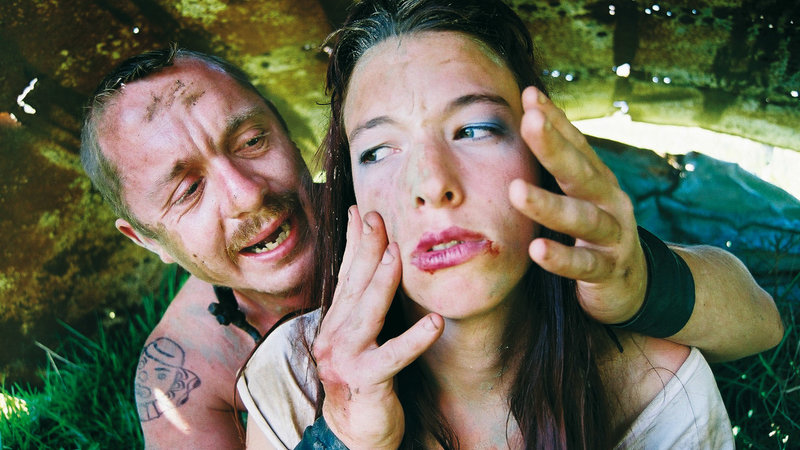
Being able to mix photography, music, humour, soft pornography, storytelling and experimentation into one form of expression is what drew me to filmmaking.
Screened as part of NZIFF 2003
Woodenhead 2003
Could this be New Zealand? Gert, ‘an innocent dump hand’, is ordered by the dump owner (an imperious Warwick Broadhead) to deliver his beautiful mute daughter, Princess Plum, to her wedding. Like a jaded, over-age Hansel and Gretel, the two trek through forest and glen coping with numerous bizarre characters who cross their path. Could this be a fairy tale then? Florian Habicht describes his gregariously eccentric feature as a ‘celebration of the sad, strange and beautiful, and a cross-pollination of Kiwi and Germanic culture, echoing my experience as an immigrant to Aotearoa’.
What’s distinctive about Habicht’s hybrid is the way he’s turned the ungainliness of transplantation into a personal style. When we’re told, for example, that Gert believes he’s the luckiest man under the sun, it’s the sheer improbability of the notion that is striking, not any insight into the significance of the slender, solemn lummox before us. The mythic force of fairy-tale may be cut up and mocked, but it still kicks around in Habicht’s picturesque frames. Disjunction is accentuated by his method of first creating his final soundtrack and then directing the film to play against it, in synch and out. Kiwi-accented refugees from a kitsch European carnival world stutter, sing and lollop their way around a New Zealand landscape of almost ethereal, black and white beauty. There are moments Fellini might have envied when Habicht’s carnival beings and his landscape coalesce in ‘sad, strange and beautiful’ florescence. — BG
The type of people I chose to cast for Woodenhead were not often actors. They were real people with peculiar/odd/unique personalities. People with x factor. People that are conventionally more suited for documentaries than fiction. I didn’t want actors imitating these personalities. Overdubbing voices enabled us to use non-actors for lead roles. Auditions were given for visual performers and separate auditions for voices. Some of the visual characters in the tale speak/sing the voices or have ‘voice cameos’ for other characters. The main characters are played by Teresa Peters and Nicholas Butler, both artists as opposed to professional actors. Auckland musicians/singer Mardi Potter and Steve Abel did their voices and sung their songs.
Generally dramatic films aim to make a contrived story into something that is real, believable and quite the opposite. Woodenhead doesn’t. It juxtaposes fake voices and contrived narratives with real (visual) characters. Basically we’ve thrown authentic oddball characters into a fairytale world. I don’t want Woodenhead to just tell a story. We use the medium to explore the relationship between the ‘real’ and fantasy — Florian Habicht, On Film